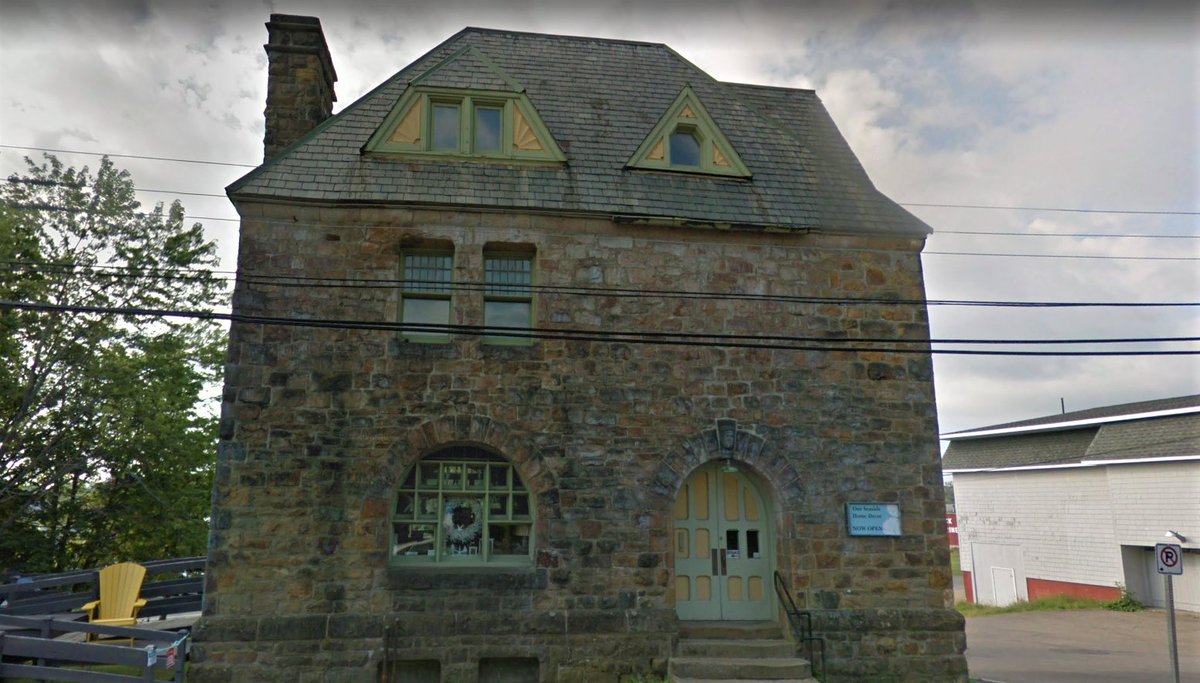We love getting questions about mining, minerals and geology! We were asked about the historic #NewCampbellton coal mine in #VictoriaCounty.
#nspoli #cbpoli #novascotia #capebreton #nshistory
@JaimeBattiste

#nspoli #cbpoli #novascotia #capebreton #nshistory
@JaimeBattiste


The New Campbellton coal mine was opened in 1862 by Charles J. Campbell, a former Member of Parliament, Member of the Legislative Assembly and executive council member. The community had been named Kelly’s Cove but was changed to New Campbellton in 1862 in honour of Mr. Campbell. 

A sample of New Campbellton’s coal was sent to the 1865 Dublin Exhibition and “was very favorably noticed by the Judges,” according to a report.
#nspoli #cbpoli #novascotia #capebreton #nshistory
#nspoli #cbpoli #novascotia #capebreton #nshistory

Production at New Campbellton declined after Britain’s (and therefore Canada’s) reciprocity/trade agreement with the United States was scrapped in 1866. The end of the deal hurt exports and demand for Nova Scotia coal dropped. New Campbellton stopped producing in 1870.
#nspoli
#nspoli

Operations started again in 1873 with modest production – only 457 tons compared to 4033 tons in 1867 – but the mine produced 5961 tons in 1874 and continued producing several thousand tons of coal per year until production slowed again in 1878 to 538 tons.
#nspoli #cbpoli
#nspoli #cbpoli

An 1874 report said there was a railway ran from the mine to the wharf at Kelly’s Cove, 1.25 miles away. The railway was pulled by horses in the early years but a light locomotive was purchased in 1874 to haul the mine’s 40 or 50 wagons. Each wagon could hold 1.5 tons of coal. 

The wharf was substantial and could load three ships at a time.
The report is a reminder of how self-sufficient people and companies had to be back then.
#nspoli #cbpoli #novascotia #capebreton #nshistory
The report is a reminder of how self-sufficient people and companies had to be back then.
#nspoli #cbpoli #novascotia #capebreton #nshistory

In its three-square mile area, the mine’s assets also included housing for miners and managers, store houses, a powder magazine, blacksmith shop and a 120 acre farm adjacent to the wharf which was partially-cultivated.
#nspoli #cbpoli #novascotia #capebreton #nshistory
#nspoli #cbpoli #novascotia #capebreton #nshistory

The property also had sandstone, limestone, sand, clay, slate and other materials that were important to building and running the operation.
#nspoli #cbpoli #novascotia #capebreton #nshistory
#nspoli #cbpoli #novascotia #capebreton #nshistory

An 1880 Inspector of Mines report said the mine had a shed that could hold 2000 tons of coal and pipes to a pond 1500 feet away to supply water.
The mine’s production continued to swing, from 4925 tons in 1880 to no recorded production in 1882-83.
#nspoli #cbpoli #novascotia
The mine’s production continued to swing, from 4925 tons in 1880 to no recorded production in 1882-83.
#nspoli #cbpoli #novascotia

In 1893 the Burchell Brothers, who had previously operated the Gardner Mines, re-opened the colliery and ran it until late 1903. The company’s coal sales were reportedly impacted by the closure of the St. Peter’s Canal for repairs in 1895...
#nspoli #cbpoli #novascotia
#nspoli #cbpoli #novascotia

...which suggests the majority of their coal was probably being exported to New England. Still, business must have been pretty good – the mine produced 16,483 tons in 1896.
#nspoli #cbpoli #novascotia #capebreton #nshistory
#nspoli #cbpoli #novascotia #capebreton #nshistory

The Burchells formed a company called the Dominion Lime & Quarry Company and opened a dolomite mine 800 metres northwest of the coal mine. A rail branch was built to it in 1897 so the dolomite could be shipped from the coal wharves in Kelly’s Cove.
#nspoli #cbpoli #novascotia
#nspoli #cbpoli #novascotia

After closing in December 1903, the coal mine reopened in April 1904 but closed again in 1907.
It reopened in 1919 at which time the Anglo Coal Company, reportedly owned by lawyer and former Glace Bay Mayor and federal MP John C. Douglas, had taken over.
#nspoli #cbpoli
It reopened in 1919 at which time the Anglo Coal Company, reportedly owned by lawyer and former Glace Bay Mayor and federal MP John C. Douglas, had taken over.
#nspoli #cbpoli

The mine closed again in 1924.
It was reported that an attempt was made to reopen the colliery in 1928, but work was soon abandoned.
In 1963 a proposal was made by Charles Smith of New Campbellton to extract 5,000 tons of near-surface coal but the work never took place.
#nspoli
It was reported that an attempt was made to reopen the colliery in 1928, but work was soon abandoned.
In 1963 a proposal was made by Charles Smith of New Campbellton to extract 5,000 tons of near-surface coal but the work never took place.
#nspoli

Charles Campbell (1819-1906) was born in Scotland and immigrated to Nova Scotia in 1830. In addition to his political career and opening the New Campbellton coal mine, he was also a successful merchant and shipbuilder in #Baddeck...
#nspoli #cbpoli #novascotia #capebreton
#nspoli #cbpoli #novascotia #capebreton

...where he is credited with playing an important role in the growth of the town.
Campbell’s face is carved in stone above the entrance to #Baddeck’s Gilbert H. Grosvenor Hall. The building was constructed in 1885-1886 with sandstone barged in from nearby #BoularderieIsland.

Campbell’s face is carved in stone above the entrance to #Baddeck’s Gilbert H. Grosvenor Hall. The building was constructed in 1885-1886 with sandstone barged in from nearby #BoularderieIsland.


It was originally Baddeck's post office and customs house. The post office was moved in 1956 and the building housed #Baddeck’s public library until the 1980s. It’s now home to the Bras d'Or Lakes and Watershed Interpretive Centre.
#nspoli #cbpoli #novascotia #capebreton

#nspoli #cbpoli #novascotia #capebreton


• • •
Missing some Tweet in this thread? You can try to
force a refresh



























